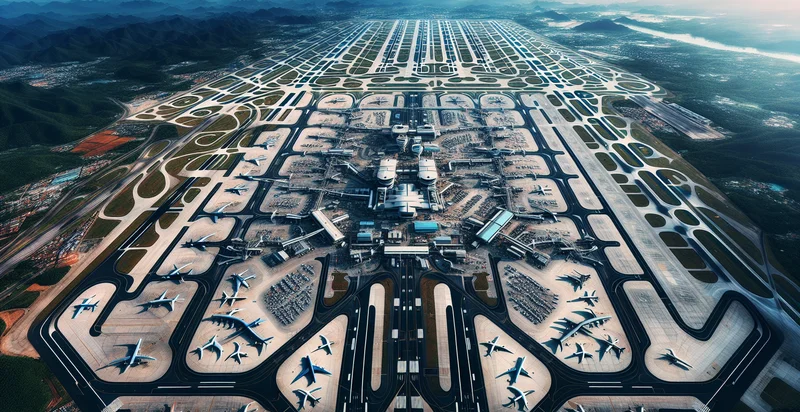Identify aerial views of airports
using AI
Below is a free classifier to identify aerial views of airports. Just upload your image, and our AI will predict if the image shows an operational airport or not - in just seconds.

Contact us for API access
Or, use Nyckel to build highly-accurate custom classifiers in just minutes. No PhD required.
Get started
import nyckel
credentials = nyckel.Credentials("YOUR_CLIENT_ID", "YOUR_CLIENT_SECRET")
nyckel.invoke("aerial-views-of-airports", "your_image_url", credentials)
fetch('https://www.nyckel.com/v1/functions/aerial-views-of-airports/invoke', {
method: 'POST',
headers: {
'Authorization': 'Bearer ' + 'YOUR_BEARER_TOKEN',
'Content-Type': 'application/json',
},
body: JSON.stringify(
{"data": "your_image_url"}
)
})
.then(response => response.json())
.then(data => console.log(data));
curl -X POST \
-H "Content-Type: application/json" \
-H "Authorization: Bearer YOUR_BEARER_TOKEN" \
-d '{"data": "your_image_url"}' \
https://www.nyckel.com/v1/functions/aerial-views-of-airports/invoke
How this classifier works
To start, upload your image. Our AI tool will then predict if the image shows an operational airport or not.
This pretrained image model uses a Nyckel-created dataset and has 2 labels, including Runway and Taxiway.
We'll also show a confidence score (the higher the number, the more confident the AI model is around if the image shows an operational airport or not).
Whether you're just curious or building aerial views of airports detection into your application, we hope our classifier proves helpful.
Related Classifiers
Need to identify aerial views of airports at scale?
Get API or Zapier access to this classifier for free. It's perfect for:
- Airport Safety Monitoring: This function can assist in monitoring airport safety by identifying and alerting authorities of unusual objects or potential hazards on the airfield in aerial images. Timely detection can prevent accidents and enhance overall safety protocols.
- Infrastructure Management: By utilizing aerial views to classify various airport structures, such as runways, taxiways, and terminals, airport management can optimize maintenance schedules. This ensures that all infrastructure is kept in peak condition, ultimately improving operational efficiency.
- Environmental Impact Assessment: The ability to classify and analyze airport expansions or renovations from aerial views facilitates environmental impact assessments. Stakeholders can make informed decisions and ensure compliance with environmental regulations by understanding potential impacts on surrounding ecosystems.
- Capacity Planning: Identifying aerial patterns of runway and taxiway usage can aid in capacity planning. By analyzing traffic flow and congestion from aerial views, airport planners can make data-driven decisions regarding expansions, scheduling, and resource allocation.
- Security Surveillance: Classifying activities and identifying vehicles in aerial views can enhance security measures at airports. This function enables security teams to monitor unauthorized access or suspicious behavior, thereby bolstering protective measures.
- Disaster Management: In the event of a natural disaster, the aerial classification function can quickly assess damage to airport infrastructure. This rapid assessment allows for timely responses, ensuring that airports can resume operations and handle emergency logistics effectively.
- Marketing and Public Relations: Aerial views can be used in promotional materials to showcase airport facilities and services. By classifying various airport assets, the marketing team can create targeted campaigns that highlight the airport's unique attributes and enhancements to attract travelers.


